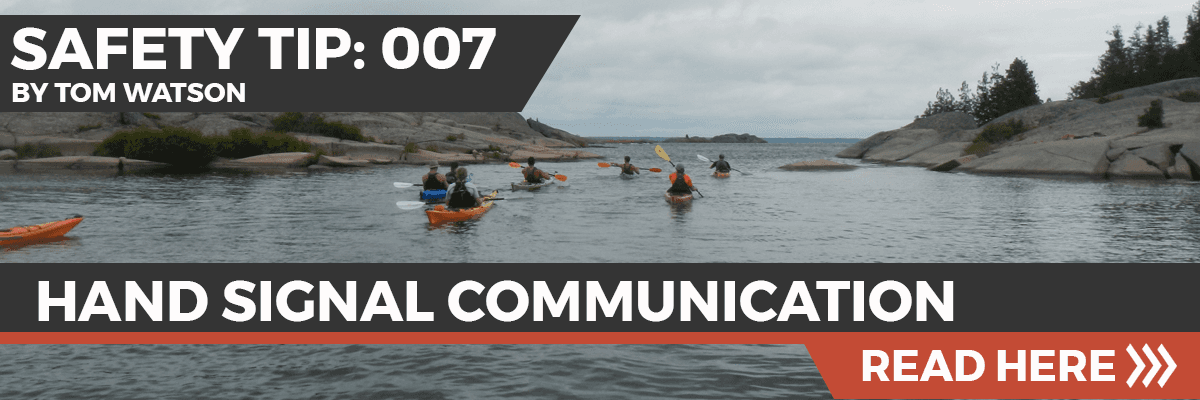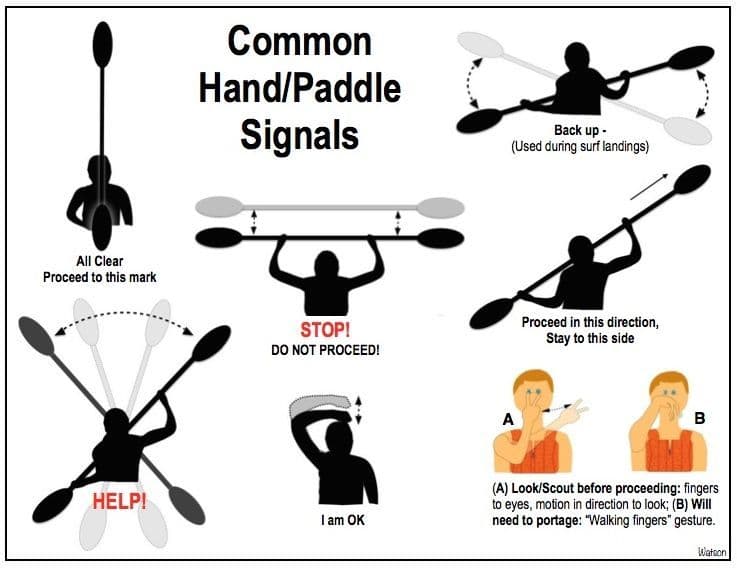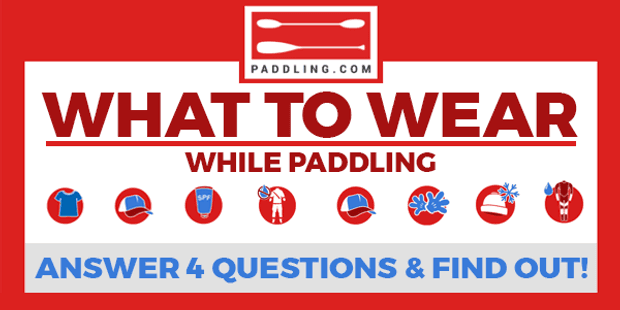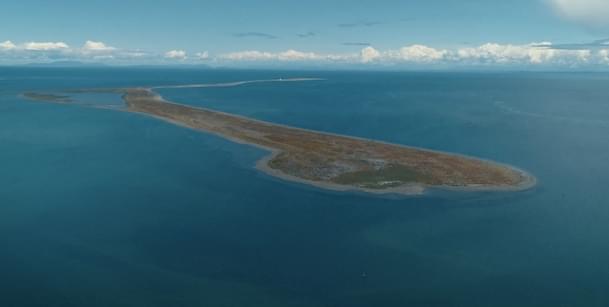Hand Signals for Kayaking
Hand Signals & On-Water Communication for Paddlers

Whether it’s passing information along a raging river channel, across a wide expanse of ocean or conveying instructions during landings in a surf zone, visual hand signals are critical for communicating with fellow paddlers over the noise and distances associated with our water environments.
Hand signals are line-of-sight communication modes that use one’s extended arm or paddle to convey a series of signals via standardized positions similar to the silent flag semaphore signaling used by Navies aboard warships at sea. Meant to be seen and understood from the vantage point of the viewer, the signaler can use various positions of the extended arm/paddle to convey information or directions to paddlers quickly and concisely.
Wondering what to wear when going paddling? Answer 4 quick questions and instantly learn what you need to wear for your next paddling trip!
How to Use Hand Signals
Oftentimes a signal is used to direct paddlers to take a particular route from their viewing point towards the distant signaler. In fast current or obstructed channels a lead paddler may signal those behind to proceed down a particular side of the channel by raising an arm/paddle and pointing it in the safe direction.
A critical rule for both signaler and recipient: The signal should always point in the direction of the course to take, and NOT point towards the hazard.
Common Hand Signals
Most signals are easier to see if kept in slight motion. A paddle held/extended vertically means All Clear/Proceed directly to me, while a paddle waved back and forth over one’s head means Help or Danger. Movement as part of the hand signal suggests that action needs to be taken immediately. A few signals are more common among a particular group of paddlers such as the “Back Up” signal for surf landings, or the “walking finger” gesture that indicates a need to portage a portion of a waterway.

Remember- group paddling situations should include a review of hand signals to be used and understood by each member of the paddling party.
Related Articles
I was a kayaker before I was a canoeist, and when I was first dragged out on rivers, I couldn't…
Kayakers at sunset in New York Harbor. Vor/Shutterstock New York City is an extraordinary place to…
Dungeness Spit from above, with the New Dungeness Lighthouse in the distance Dungeness…
Driving a car safely involves much more than merely focusing only as far ahead as the taillights of…




